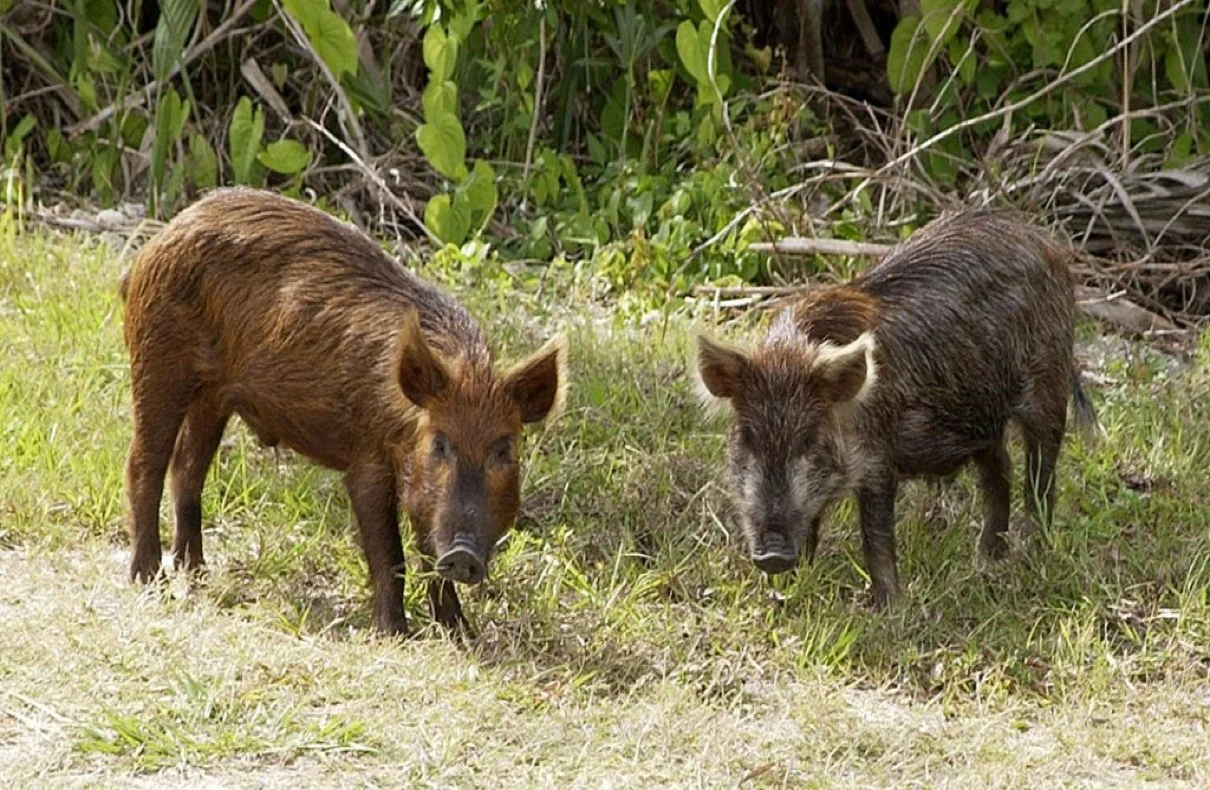Ecosystem restoration is a critical endeavor in our ever-changing world. As we strive to repair and preserve our natural habitats, researchers are constantly exploring innovative methods to facilitate this process. In a groundbreaking study, scientists have discovered that feral pigs and donkeys can play a remarkable role in ecosystem restoration.
Traditionally, conservationists have focused on eradicating non-native species in an attempt to protect native flora and fauna. However, this approach may not always yield the desired outcomes. In fact, it can be a flawed practice that not only costs millions of dollars but also results in the unnecessary slaughter of healthy wild animals.
The first animal that has emerged as a surprise player in ecosystem restoration is the feral pig. These intelligent and adaptable creatures, often considered a nuisance, have proven to be remarkably effective in promoting biodiversity. Contrary to popular belief, feral pigs have a positive impact on ecosystems, particularly in areas where native megafauna are absent.
A Battle to Protect Animals Amidst Texas Largest Wildfires
A study conducted by researchers at the University of Oxford and Aarhus University compared the effects of feral pigs and native large herbivores on plant communities. They found that the two groups had indistinguishable effects on the abundance and diversity of native plants. This challenges the notion that feral pigs should be eradicated, suggesting instead that their ecological role should be studied and understood.
Another unexpected contender in the realm of ecosystem restoration is the donkey. Native to various parts of the world, donkeys have been introduced to new habitats and have thrived in these environments. Researchers have discovered that donkeys can have a significant impact on plant communities, particularly in arid regions.
In arid ecosystems where water scarcity is a major challenge, donkeys play a crucial role as key dispersers of seeds. Their digestive system helps break down seeds, increasing the chances of successful germination. Moreover, donkeys have a unique feeding behavior that favors the establishment of smaller sub-dominant plant species, thereby enhancing overall plant diversity.
While feral pigs and donkeys may not be native to certain regions, their presence can fill functional niches left vacant by extinctions and extirpations. This is especially true when the functional traits of these animals align with those that were lost in the past. By reintroducing large animals with similar functional traits, even if they are non-native or feral, we can restore crucial ecosystem functions.
New Camera System Reveals Animals Vibrant Colors
The body mass of individual animals also plays a significant role in shaping their impact on ecosystems. For example, small-bodied picky-eaters like deer tend to suppress plant diversity, while larger, generalist bulk-feeders like buffalo tend to increase plant diversity. Understanding these nuanced effects allows conservationists to make informed decisions when it comes to managing feral pigs and donkeys in restoration projects.
Aside from their ecological contributions, feral pigs and donkeys offer additional benefits in the realm of conservation. One of the most notable advantages is the cost-effectiveness of utilizing these animals in restoration efforts. Unlike conventional methods that involve expensive eradication programs, harnessing the potential of feral pigs and donkeys is a more affordable alternative.
Furthermore, reintroducing feral pigs and donkeys into ecosystems can reduce the risk of species endangerment. Many of these animals are already endangered in their native habitats, and their successful establishment in new environments can help safeguard their populations.
Several notable case studies demonstrate the positive impact of feral pigs and donkeys in ecosystem restoration. These examples highlight the potential of these animals to transform degraded landscapes into thriving habitats.
In the Australian Outback, feral pigs have become a significant force in restoring degraded ecosystems. The absence of native megafauna has created an ecological void, which feral pigs have filled by performing vital functions such as seed dispersal and soil disturbance. As a result, native plant communities have experienced a resurgence, leading to increased biodiversity and improved ecosystem resilience.
A Hidden Jurassic Secret: An Almost Perfect Titanosaurs Skeleton Found
The American Southwest, known for its arid landscapes, has also witnessed the transformative power of donkeys in ecosystem restoration. In regions where water scarcity poses a significant challenge, donkeys have played a critical role as seed dispersers. Their unique digestive system allows them to break down seeds and enhance germination rates, ultimately contributing to the recovery of plant communities in these arid environments.
While the potential of feral pigs and donkeys in ecosystem restoration is promising, there are challenges that need to be addressed. One such challenge is managing the population sizes of these animals to prevent negative impacts on native species and ecosystems. Careful monitoring and adaptive management strategies are essential to ensure a balanced and sustainable approach.
Additionally, further research is needed to fully understand the ecological roles of feral pigs and donkeys in different ecosystems. This includes investigating their impact on specific plant species, soil dynamics, and interactions with other native fauna. By expanding our knowledge in these areas, we can refine restoration strategies and maximize the benefits these animals offer.
